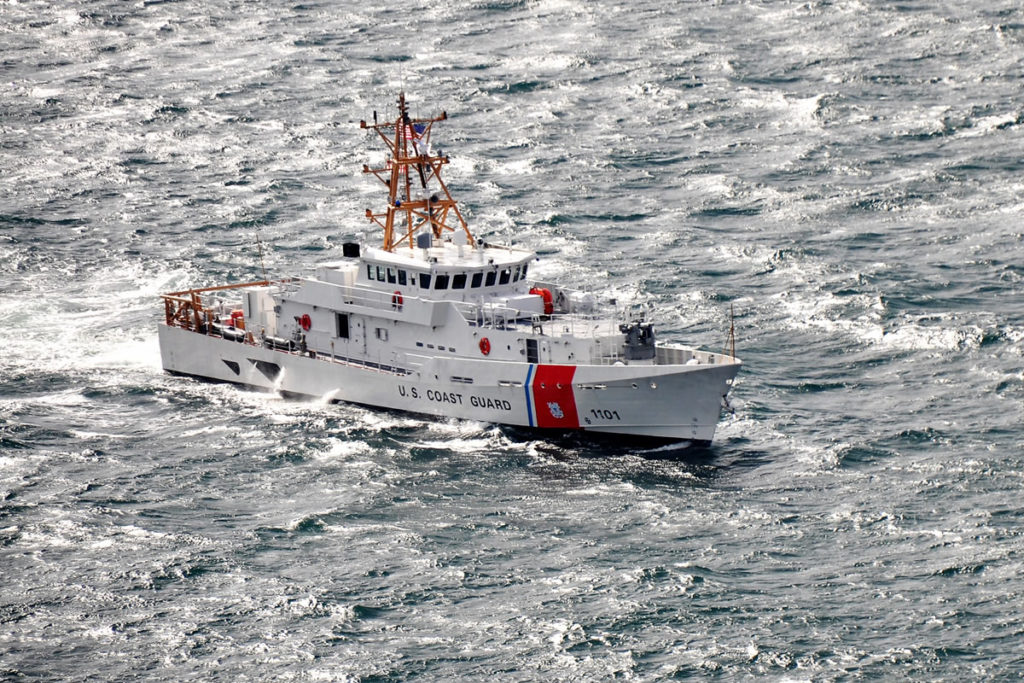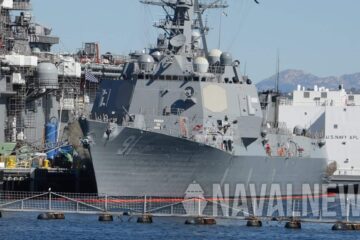JQL could be the “Game Changing Force Multiplier” that many small naval boats need to protect themselves from certain sea and aerial threats and to challenge larger warships and even shore-based targets.
The JAGM is essentially a replacement for the Hellfire II Anti-Tank Guided Missile (ATGM). Hellfire II comes in a variety of warhead and seeker types, usually semi-active laser-homing or millimeter wave radar guidance. JAGM takes both guidance types and combines it into one seeker head, allowing the target to be either “painted” with a laser designator, or guided through the air towards the target with a radar system such as the mast-mounted radar on top of the AH-64 Apache Longbow attack helicopter’s rotors; the Longbow Apache is in service with the U.S. Army and several NATO nations. JAGM has a range of around 5 miles/8 km and entered Initial Operational Capability (IOC) in 2019. JAGM has a Unit Cost of US $324,805 (FY2021) for the dual-mode seeker, more than the US $70,000 (FY2021) cost of a typical AGM-114 Hellfire missile, and JAGM weighs about the same as the Hellfire II although unconfirmed specifications say JAGM falls short of the 6.84 mi/11.01 km of the Hellfire II. The U.S. Army, U.S. Marines, and U.S. Navy intend to buy thousands of JAGMs to avoid having to mix-and-match loading of different Hellfire variants with their different seekers and warheads; JAGM makes it easier for logistical and tactical targeting purposes even though JAGM may cost more.
JAGM, weighing in at 108-pounds (49 kg), is larger than the 45-pound (20 kg) AGM-176 Griffin ATGM with its smaller 13-pound (5.9 kg) warhead and 5 mile/8 km range that is mounted on U.S. Navy Patrol Coastal boats. A larger warhead obviously means more destructive potential, especially important against surface ships built to take hits and keep on fighting.
The JQL uses the M299 helicopter quad Hellfire missile launcher and essentially wraps the M299 rails in a steel box and places it for vertical instead of horizontal launch. Both Hellfire and JAGM follow an overhead ballistic arc towards any sea surface or aerial target as these ATGMs are not sea-skimming missiles after launch.
Naval News reached out to Lockheed Martin and Lockheed said that land-based ground-launched testing of the JQL was slated for mid-2020, but due to the COVID pandemic, testing schedules are tentative now and JQL testing has slipped potentially to the Summer of 2021. Currently, there are no plans for JQL testing aboard any boats or ships yet and the JQL firing test will be from land to prove the JQL concept.
Game Changing and Force Multiplication Advantages for Small Boats and Large Cutters

Center: eight M299 launchers embedded into a Littoral Combat Ship for a small footprint
Right: eight M299 launchers on the bed of a JLTV for Marine rotary and armor defense
Lockheed’s JQL offers three mounting configurations: embedded into the hull, sitting on top of the boat or ship’s deck, and sitting in the cargo bed of a Joint Light Tactical Vehicle (JLTV). Thus, navies and coast guards do not have to drill into the decking of boats, ships, and Cutters to embed the launchers inside the hull and can just place the JQLs on top of the deck, not affecting the deck spaces below. What the JQL and JAGMs lack in range and warhead weight can be remedied by the quantity of quad launchers installed, providing a ship with previously no missiles a lot of JQLs as long as there is available deck space. Thus, a small boat, littoral ship, or a Cutter can have anywhere from four to dozens of JAGM launchers when there used to be no other armament except direct-fire line-of-sight guns having limited use against moving targets, rotary aircraft, and even enemy armor on the coast.
The U.S. Army’s IM-SHORAD Stryker Air Defense Vehicle’s turret mounts two Hellfire missiles for Anti-armor and Anti-helicopter defense. Similarly, JQL can equip JLTVs with eight JAGMs, providing a tactical truck with a guided ATGM useful for multiple purposes that can engage far beyond the range of the primary gun mounted on the turret ring. The Lockheed JQL brochure states that:
“JQL’s Launcher Electronics Assembly/Launcher Management Assembly launch control system can be integrated with local and remote weapon control systems using wired and wireless interfaces.”
Using wired or wireless interfaces to launch JAGMs could provide JLTV-equipped Marines with a sort of small Anti-armor/drone and rotary Air-Defense JAGM-JLTV fired remotely from a distance for better area denial capabilities for the U.S. Marine’s Force Design 2030.
Chuck Hill of ChuckHillsCGBlog stated the versality of the JQL and JAGM for small boats:
“The Hellfire/JASM can successfully engage a large spectrum of potential maritime terrorist threats from small fast highly maneuverable craft (with one hit) to larger ships (assuming multiple hits), helicopters, drones, and some fixed wing aircraft. Hellfire warhead is only 20 pounds, but that is a lot more explosive than a 57mm projectile which weighs less than 6 pounds and has a bursting charge of less than a pound. Even several Hellfire hits might not stop a larger vessel, but should work against anything under 1,000 tons. Maybe larger if you get lucky. Ability to specifically target bridge, engine room, and steering using laser could be very significant.”
While the JQL won’t allow the same Strike-length missile armament as the much taller MK41 Vertical Launch System (VLS armed with Tomahawk cruise missiles, Standard Surface-to-Air missiles and Anti-Submarine Rockets), even if the MK41 is mounted diagonally on top of the deck, the JQLs are smaller, less expensive and less complex and should give small boats a vital VLS. Potential users might include the U.S. Navy boats that lack (adequate) missile armament such as the Patrol Coastal Boats, the 85-foot MK VI Patrol Boats, the future Light Amphibious Warship, and up-arm the Littoral Combat Ships and Amphibious Warfare Ships in addition to U.S. Special Operations Command’s Combat Crafts. The U.S. Coast Guard Cutter fleet, ranging from the Sentinel-class Fast Response Cutters, the Offshore Patrol Cutters, and the National Security Cutters in addition to the upcoming Polar Security Cutters and in-service Polar Star and Healy icebreakers could benefit from having some JQLs on their decks for self-protection against ever evolving littoral and maritime threats.
JQL coincides with the U.S. Navy’s methodology of “Distributed Lethality” for “Distributed Maritime Operations (DMO).” At the Surface Navy Association (SNA August) 2020, virtual due to COVID-19, RADM Paul Schlise, USN, said that Distributed Lethality and DMO ties to the U.S. Navy’s unmanned vision.
“Envision a force of unmanned platforms, potentially some sensor-only platforms, potentially some platforms that are adjunct magazines, and knitting those together through a common combat system, common source library…some smaller platforms…all the distributed force that General King [U.S.M.C.] talked about…small, fast, agile, and hard to find [such as JLTV-JQL] and all those are attributes that will help us win this combined fight. Many of those platform technologies are on the drawing board, or as General King mentioned, we’re cutting steel on them already.”
RADM Paul Schlise, US Navy, SNA 2020

As he sat beside the Rear Admiral on screen, General Tracy King, U.S.M.C., also supported RADM Schlise’s statement at SNA 2020, citing that if the combined U.S. Navy and Marine Joint Forces are going to be “Distributed,” both parties have to ensure that the new ships, such as the LAW, will have increased lethality. “If it floats, it fights,” said General King, U.S.M.C. “The over-arching intention of what we’re trying to do is to reinvigorate the Joint Force’s ability to conduct maritime campaigning in a 21st century threat environment.”
JQLs fit perfectly into the paradigm of increasing the lethality and DMO of the LAW, the U.S Navy’s primary future amphibious investment, instead of having a LAW armed with just a 25mm autocannon and .50cal manual-aimed heavy machine guns that have limited use against moving sea, armor, and rotary targets because the bullets are not guided and can’t hit beyond line-of-sight.











